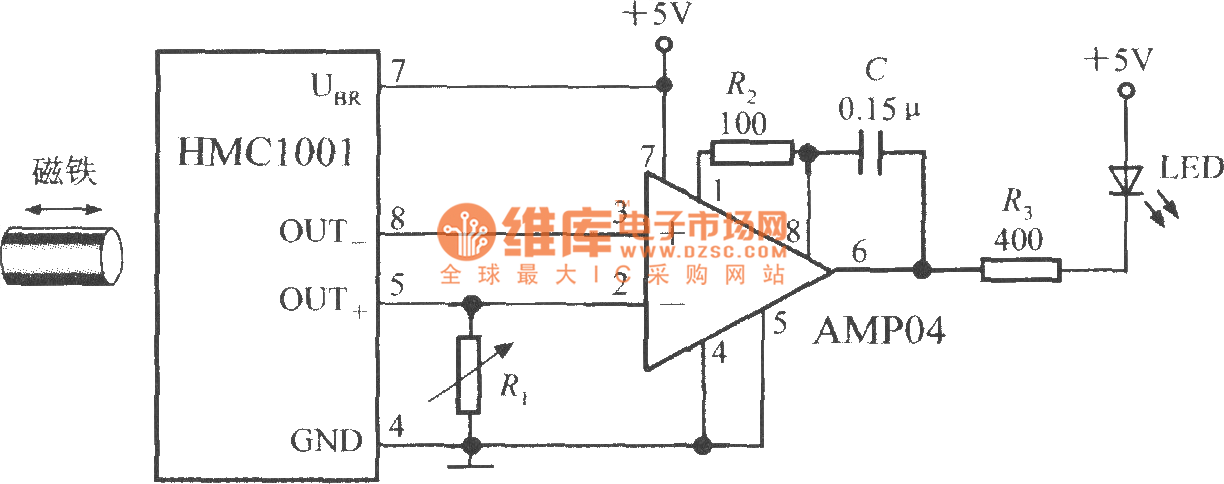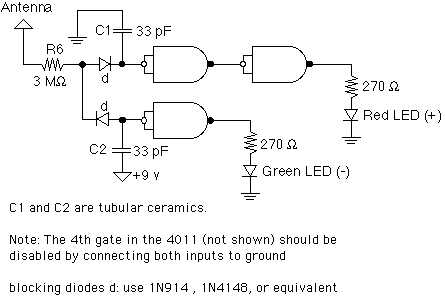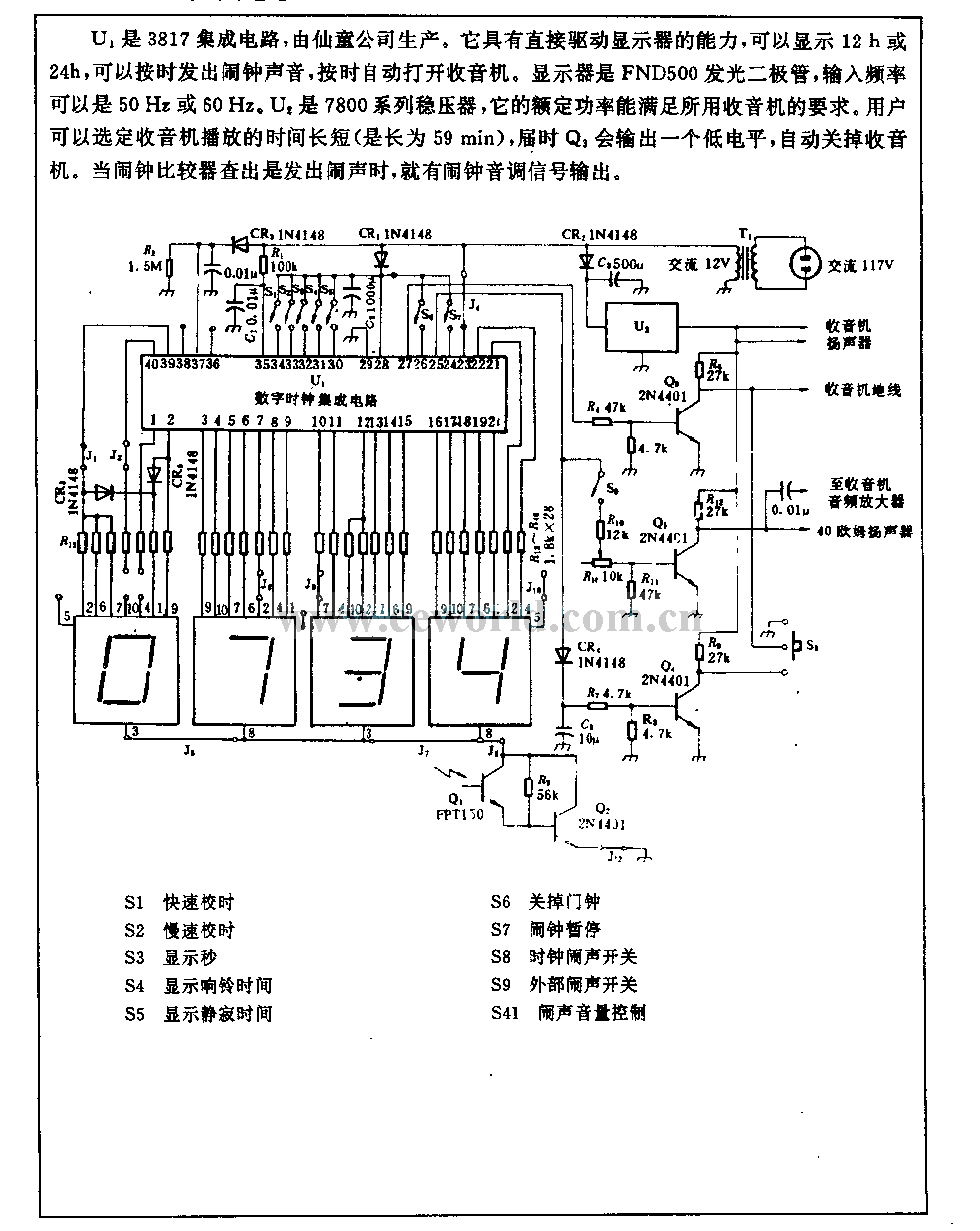
The proximity switch circuit with integrated magnetic field sensor HMC1001

The proximity switch circuit consists of the HMC1001 sensor, operational amplifier (AMP04), and a light-emitting diode (LED). The operational amplifier functions as a comparator. When a magnet, measuring between 6mm and 12mm, is moved to a predetermined position near the HMC1001, the output voltage from the MR bridge reaches 30mV, causing the comparator to switch its output state.
The proximity switch circuit utilizes the HMC1001, a highly sensitive magnetic sensor, which detects the presence of a magnetic field. The operational amplifier (AMP04) is configured in a comparator mode to compare the output voltage from the HMC1001 with a reference voltage.
In this configuration, when the magnet is positioned within the specified range (6mm to 12mm) of the HMC1001, the MR bridge generates an output voltage of 30mV. This voltage is sufficient to exceed the threshold set by the operational amplifier's reference input, resulting in a change in the output state of the comparator. The output of the operational amplifier can then drive an LED, indicating the detection of the magnetic field.
The circuit may include additional components such as resistors to set the reference voltage and capacitors for stability and noise filtering. The LED serves as a visual indicator, illuminating when the magnetic field is detected, providing a clear and immediate response to the presence of the magnet. This circuit is applicable in various automation and sensing applications, where proximity detection is essential for system operation.As shown in figure, the proximity switch circuit is composed of HMC1001, operational amplifier (AMP04) and light emitting diode (LED). The operational amplifier is used as a comparator. When you move magnet with length being 6mm~12mm to HMC1001 in a predetermined position, the output voltage of MR bridge will reach 30mV, then the comparator flips, and output..
🔗 External reference
The proximity switch circuit utilizes the HMC1001, a highly sensitive magnetic sensor, which detects the presence of a magnetic field. The operational amplifier (AMP04) is configured in a comparator mode to compare the output voltage from the HMC1001 with a reference voltage.
In this configuration, when the magnet is positioned within the specified range (6mm to 12mm) of the HMC1001, the MR bridge generates an output voltage of 30mV. This voltage is sufficient to exceed the threshold set by the operational amplifier's reference input, resulting in a change in the output state of the comparator. The output of the operational amplifier can then drive an LED, indicating the detection of the magnetic field.
The circuit may include additional components such as resistors to set the reference voltage and capacitors for stability and noise filtering. The LED serves as a visual indicator, illuminating when the magnetic field is detected, providing a clear and immediate response to the presence of the magnet. This circuit is applicable in various automation and sensing applications, where proximity detection is essential for system operation.As shown in figure, the proximity switch circuit is composed of HMC1001, operational amplifier (AMP04) and light emitting diode (LED). The operational amplifier is used as a comparator. When you move magnet with length being 6mm~12mm to HMC1001 in a predetermined position, the output voltage of MR bridge will reach 30mV, then the comparator flips, and output..
🔗 External reference
Warning: include(partials/cookie-banner.php): Failed to open stream: Permission denied in /var/www/html/nextgr/view-circuit.php on line 713
Warning: include(): Failed opening 'partials/cookie-banner.php' for inclusion (include_path='.:/usr/share/php') in /var/www/html/nextgr/view-circuit.php on line 713





